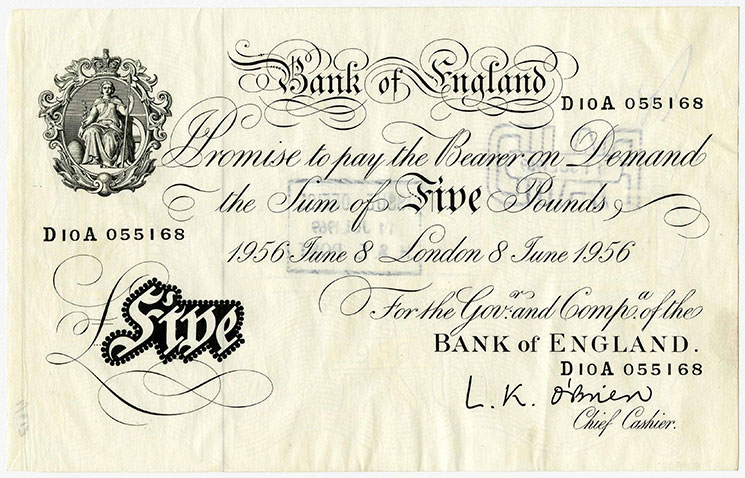The Bank of England has produced banknotes since the late 1600s. Our collection shows how these early notes that ‘promised to pay’ developed into the fixed denomination, or value, notes we use today.
1660
Cheque
The earliest cheque in our collection was handwritten by Nicholas Vanacker. It instructs William Morris to pay £200 to Mr Delboe.
The partnership of William Morris (c.1625–83) and Robert Clayton (1629–1707) dominated the London banking market at this time. They specialised in lending to landowners seeking credit in London during the disruption of the English Civil War.
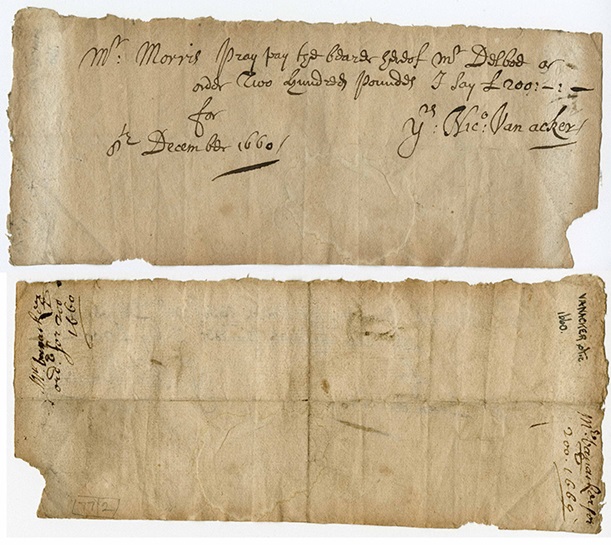
1697
Fragment of a running cash note
Running cash notes were the Bank of England’s first ‘promises to pay’. They were the forerunner of modern banknotes.
This handwritten fragment is from one of the earliest known examples.
It promises to pay the bearer £22, which means it could be exchanged for that value of gold. As the inscription shows, the deposit was withdrawn in two payments (£5 and £17).
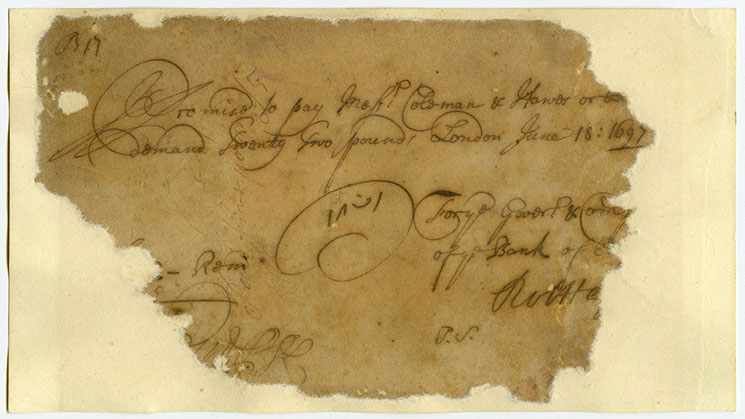
1699
Running cash note
Notes were not always issued for set denominations, or values.
This note was for £150 8s 8d. It is printed with a Britannia medallion and the ‘promise to pay’ but the rest is written by hand. The deposit was withdrawn in two payments (£19 12s and £130 16s 8d).
The tear on the bottom right hand corner shows the balance has been paid.
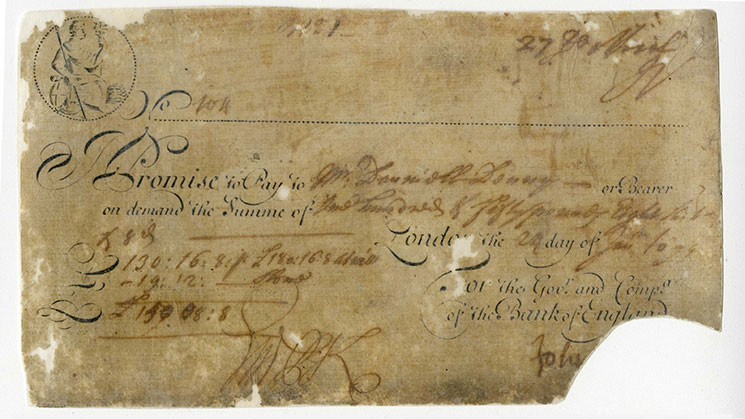
1732
£50 banknote
As demand for Bank of England notes increased, it became easier to print banknotes in set amounts.
This £50 banknote, part-printed with a Britannia medallion and the ‘promise to pay’, has been completed by hand with extra notes on the back.
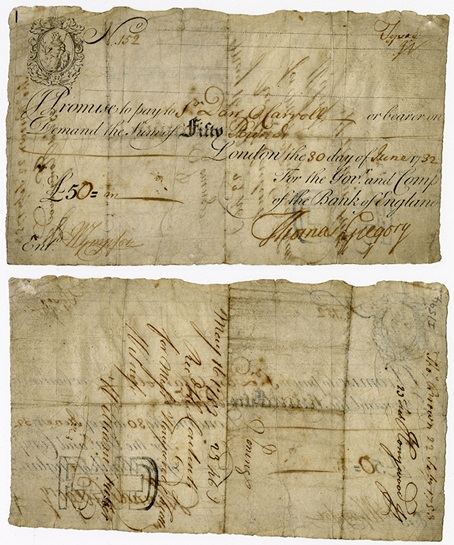
1743
£50 banknote
Printed sum blocks are an elaborate version of the banknote’s denomination, or value, in white letters against a black background. They were introduced in 1743 and made it difficult to alter the value of a note.
This part-printed £50 note has been cancelled because the denomination block has been punched through and the Chief Cashier's signature removed.

1767
Accountable note
Accountable notes were issued when people deposited money in the Bank of England.
This handwritten example lists deposits made by Eleanor Strong and agrees to pay her £100 twice a year in interest (£30,000 today). On the back it lists 34 interest payments made by the Bank, to Mrs Strong, from 1768 to 1784.
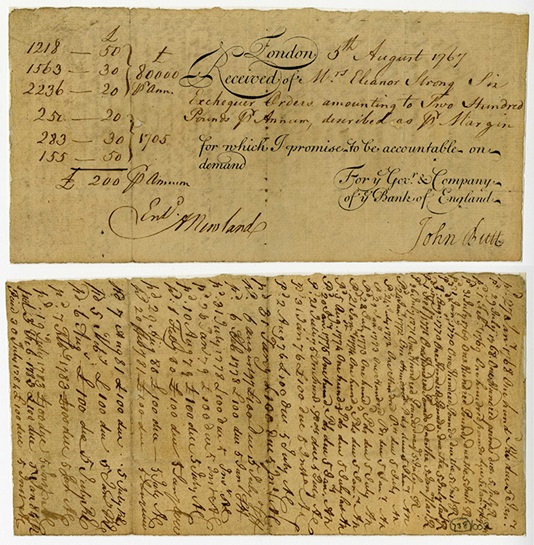
1855
Banknote fragments mounted on paper
While travelling in Switzerland in 1855 Mary Maynard (1794–1897) hid her banknotes in her undergarments for safekeeping. Unfortunately, she forgot to remove them and the notes were damaged when the dress was laundered.
Luckily, enough fragments survived for Bank of England clerks to identify the damaged notes and issue replacements to the value of £50.
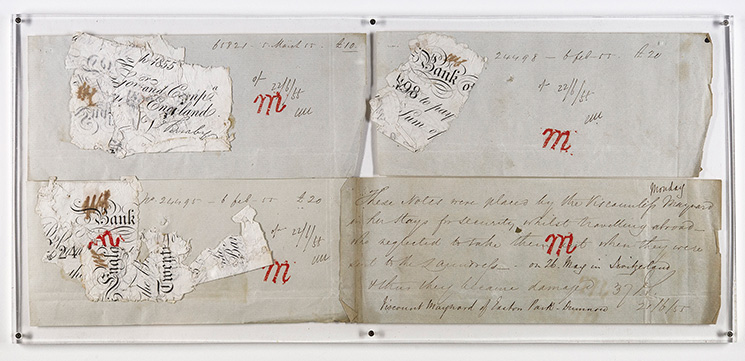
1855
£5 banknote
To compensate for the gold shortage caused by the French Revolutionary Wars (1792–1802), in 1793 the Bank of England issued the £5 note.
The single-sided and fully-printed ‘white fiver’ design remained in circulation until 1957. You can see the medallion of Britannia, designed by artist Daniel Maclise (1806–1870) in 1855, on the top left hand corner of this 1956 example.
